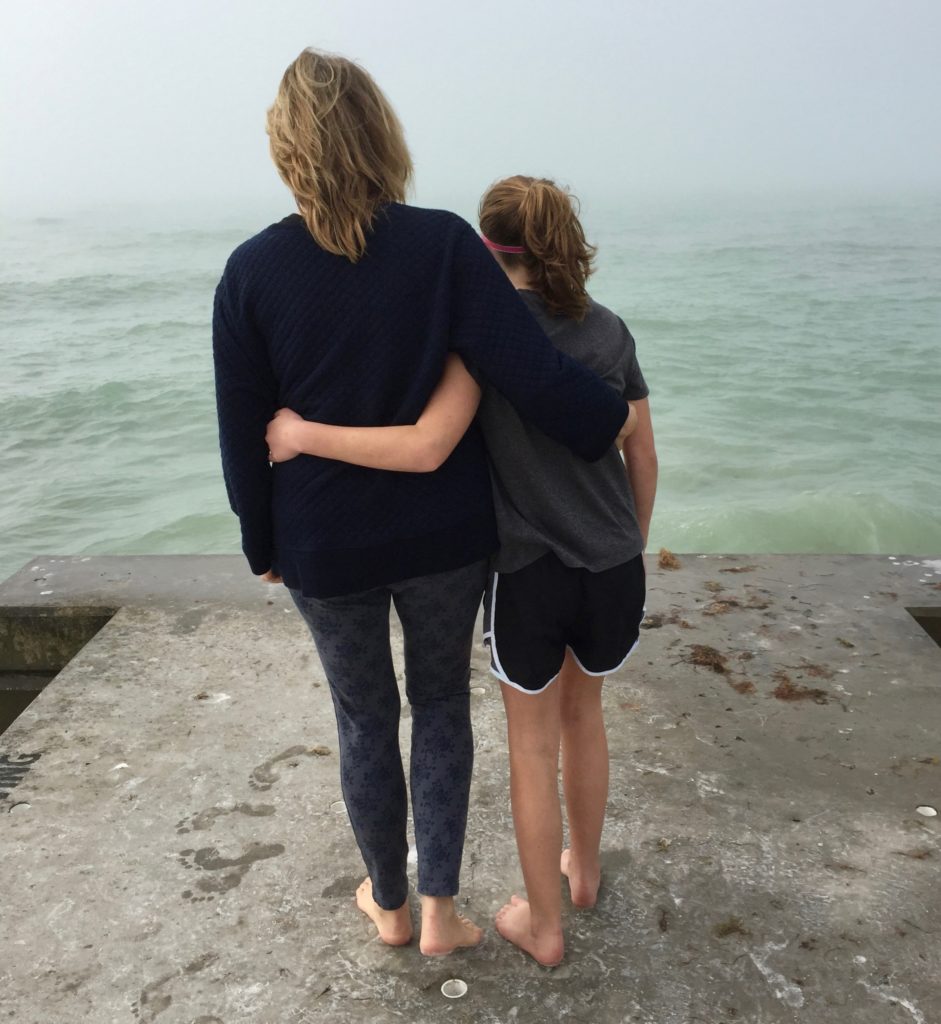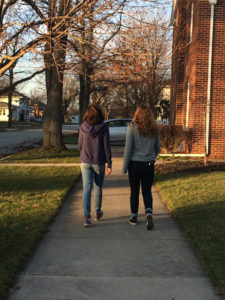Hello, Friends—
I want to share a little about the evolution of PROJECT TALK + LISTEN.
Its seed grew during visits with my teenage grandchildren. We walked, telling and listening to each other's thoughts and feelings about whatever came up. I wondered how they were experiencing and talking with their friends about the 2016 presidential election outcome. I was curious about their cares, concerns, and interests. I wanted to connect with them. I felt grateful for their openness and trust.
I was also conducting a personal experiment.
At that time I had begun to notice how I reacted to what I heard, whether it was my husband, daughter, a child, a speaker at an event, someone in the news, or a friend. I found that even though I was quiet, my mind was active. Too often I was evaluating what I heard. My thoughts were either agreeing or disagreeing or judging: "Me too," or "That's not what I would do" or "That seems rational in how she thought that through."
I saw that my reactions created a postage-stamp-size view of what was expressed and cut off my curiosity about the talker's experience, idea, and inner world.
Then I reread an essay that Carl Rogers wrote in 1951 for the Centennial Conference on Communications at Northwestern University and had an insight. I began to see how listening from a personal point-of-view sabotages understanding. (The title of his talk was "Dealing With Breakdowns in Communication," which later became a chapter in his book On Becoming A Person.) Rogers believed that the major barrier to real communication is "our very natural tendency to judge, to evaluate, to approve or disapprove." He also believed that talking with genuineness and transparency, and empathetic listening (understanding with someone, not about someone) is possible and beneficial.
At the end of his talk, he suggested that "barriers to communication can be avoided by creating a situation in which each of the different parties comes to understand the other from the other's point of view."
I wondered if Project Talk + Listen could provide situations for this "come-to-understanding" practice. So, I've posted some topics (I chose artworks) to participate in observing, describing, listening, and expressing with others.
Like Rogers, I'm not the only one interested in uncovering and avoiding problems of communication and connection. Wonder Anew participants process a personal difficulty and then read what they've written out loud to a trusted listener. The teller and listener report their struggles:
"I interrupt, which makes her mad."
"I react to everything she says. Even when I'm quiet, my face seems to know emotional sign language."
"I'm upset and need to talk to someone who can listen and not freak out."
"I end up trying to make him not have THAT feeling or THAT thought!"
"I shut down and can't hear what is said. It's as if I go deaf to survive the words."
"I lie instead of tell what I really think."
"I feel relief and figure stuff out when I can talk to someone who listens."
"She doesn't want to hear what I say. She just wants to tell what she thinks"
Of course, this is an ideal practice. It's not one I'll get to check off my list. Yet, the more I practice, the more spontaneously I'll realize when I am not genuinely listening or expressing. If I can listen to see life from another's view, even once, there is tremendous potential for me to see what I couldn't before see. And accept, perhaps understand, what is shared.
One last bit, from my granddaughters.
They tell me they take Talk + Listen walks with friends. My hope is that, like them, I spontaneously bring what I'm learning about how I relate to others and life into all of my interactions. I'm already practicing. I hope you join me.
Susan


